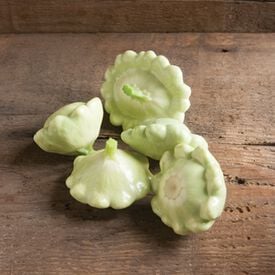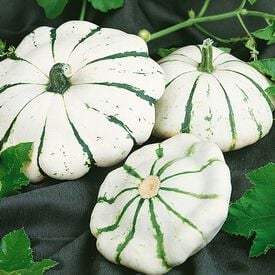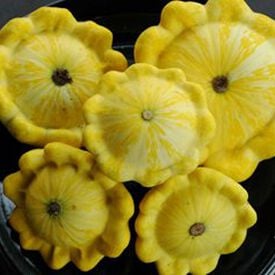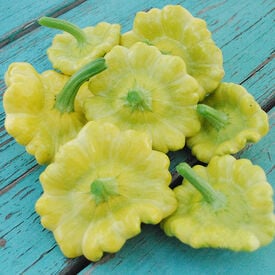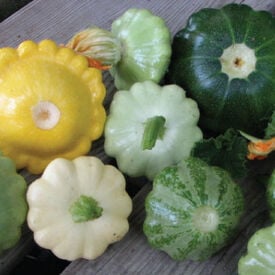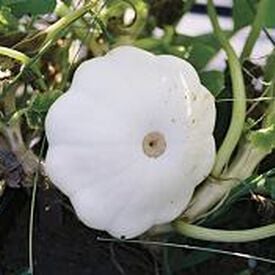The Benning's Green Tint is a very light green scallop-shaped summer squash with a deliciously tender and good quality flesh. This squash variety is easy to grow and produces high yields. The Bennings Green Tint Scallop is an old time favorite squash that is great for markets and home gardens.
The Scallop Juane et Verte Squash is a beautiful french heirloom scalloped summer squash that is known for being very flavorful. This cream-ivory and green striped scalloped squash can be used for both ornamental and cooking purposes. Scallop Juane et Verte is the perfect stuffing squash!
The Yellow Bush Scallop Squash plant, also known as the Golden Custard, produces beautiful yellow scallops. This variety offers beautiful, bright yellow fruits with a rich, mellow flavor that is perfect for stuffing. The Yellow Bush Scallop offers high yields making it great for market production.
Gelber Englischer squash, also known as "Yellow English Squash," is a classic heirloom variety with a history that dates back to the 19th century. Originating from England, this squash is celebrated for its vibrant yellow color and distinctive culinary qualities. The plant produces smooth, medium-sized fruits that are typically yellow when ripe. Known for its tender texture and mild, buttery flavor, Gelber Englischer squash is versatile in the kitchen, ideal for sautéing, grilling, or adding to soups and casseroles. The plant grows in a sprawling habit, with broad, heart-shaped leaves and is generally vigorous and productive. It is usually ready for harvest in mid to late summer when the fruits are firm and bright yellow. With its rich history, appealing color, and delicious taste, Gelber Englischer squash continues to be a popular choice among gardeners and chefs alike.
The Scallop Blend Squash is a wonderful mixture of unique yellow, white, and green scallops. This fun blend is perfect for home gardeners. Growing the unique, colorful Scallop Blend will give you a mix of different tastes, maturity times and colors in your garden.
The Scallop Early White Squash, also known as Patty Pan, tastes great when harvested early at smaller size. This variety produces good yields of white squash. The Scallop Early White is very easy to grow and is rarely bothered by insects. The Scallop Early White is a bush type of squash that has a creamy texture that is very flavorful, suitable for both small home gardens and market growers.
